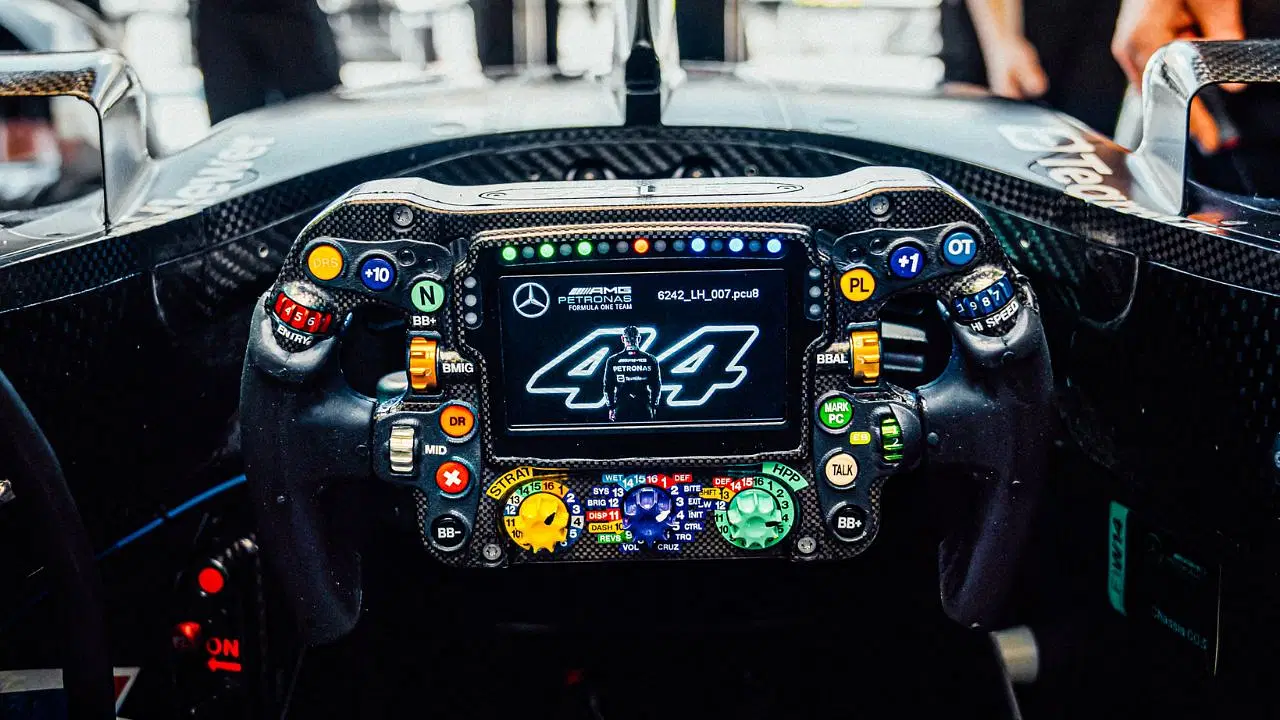The F1 steering wheel is the ultimate control panel for racecar drivers. It may look like a regular steering wheel on the surface. In reality it is actually a complex and highly sophisticated piece of computerized technology.
The Formula 1 steering wheel allows drivers to control every aspect of their car’s performance. From changing gears to adjusting the fuel mixture, the F1 steering wheel is the nerve center of the car. It enables the drivers to fine-tune their driving and make split-second decisions
In this article, we’ll take a closer look at the steering wheel. We explore the various functions and features that make it such a crucial part of modern motorsport. So buckle up and get ready to discover the secrets of the ultimate driving machine!
The Evolution of the Formula 1 Steering Wheel
The F1 steering wheel has undergone significant changes over the years, with each design iteration incorporating new technologies and features. In the early days of motorsport, steering wheels were simple wooden or metal rims with a few spokes.

As cars grew faster and more complex, the steering wheel evolved. It started with a few basic functions such as a horn, a gear shift, and a clutch.
However, it wasn’t until the 1980s that the F1 steering wheel began to take on its current form.
The introduction of electronic controls and onboard computers allowed drivers to access a wider range of functions and data. The steering wheels started to include more buttons, knobs, and switches.
Today, F1 engineers make the F1 steering wheel a highly sophisticated piece of technology. It incorporates a range of sensors, displays, and controls that allow drivers to fine-tune their cars in real-time.
How Much Does An F1 Steering Wheel Cost?
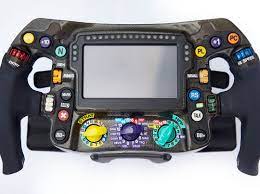
The Red Bull team web site states that an F1 steering wheel costs $50,000.
Why Is An F1 Steering Wheel So Expensive?
While the steering wheel’s basic function is to steer the car, that is just one of many others.
All of the F1 car controls that were previously installed around the cockpit are now contained in the steering wheel. This means that the F1 driver can check any information and adjust setting without moving his hands from the wheel.
They Make It From Expensive Materials
The engineering departments manufacturer the F1 steering wheel from five, lightweight and strong materials. These are the construction blocks of several hundred individual parts that form the bigger components inside a Formula 1 steering wheel.
Those five components are
- Carbon fiber.
- Fibreglass.
- Silicon.
- Titanium.
- Copper.
Components Of The F1 Steering Wheel
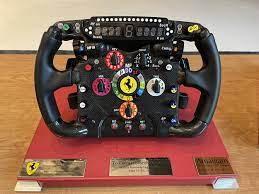
The steering wheel is a complex assembly of components that work together to give drivers complete control over their cars. At its most basic level, the steering wheel is a circular rim that the driver uses to turn the car. However, there is much more to the F1 steering wheel than just a wheel.
It is designed to be a highly integrated system. It includes a range of controls and displays that allow drivers to monitor and adjust their car’s performance in real-time. Some of the components in an F1 steering wheel include:
- Paddle shifters for changing gears
- Clutch paddles for launching and pit stops
- 35 or more knobs and buttons for adjusting fuel mixture, engine mapping, and brake balance.
- Rotary dials an switches for adjusting differential settings, traction control, and other systems.
- A small LCD screen that displays lap times, fuel consumption, and other vital data.
The following are inside the steering wheel
- Complex electrical circuitry
- The circuit boards
- The carbon enclosure
- The quick release
- The electrical connectors
- The steering itself
What Can An F1 Driver Control With The Steering Wheel?
It allows the driver to control the following systems and more.
- The Steering
- The Gears
- The Clutch
- Optimize the brake settings of the car (the driver can shift the brake balance from the front to the rear or vice versa.)
- The amount of torque transfer between the rear wheels.
- The Power Unit modes – “strat mode”
- Deployment of electrical energy of the MGU-K.
- Energy recovery of both MGU-K and MGU-H.
- Activating the Drag Reduction System (DRS)
- Activating the radio
- Activating the pit lane speed limiter
- Change the data displayed on the screen,
The Formula 1 Steering Wheel Is Very Important
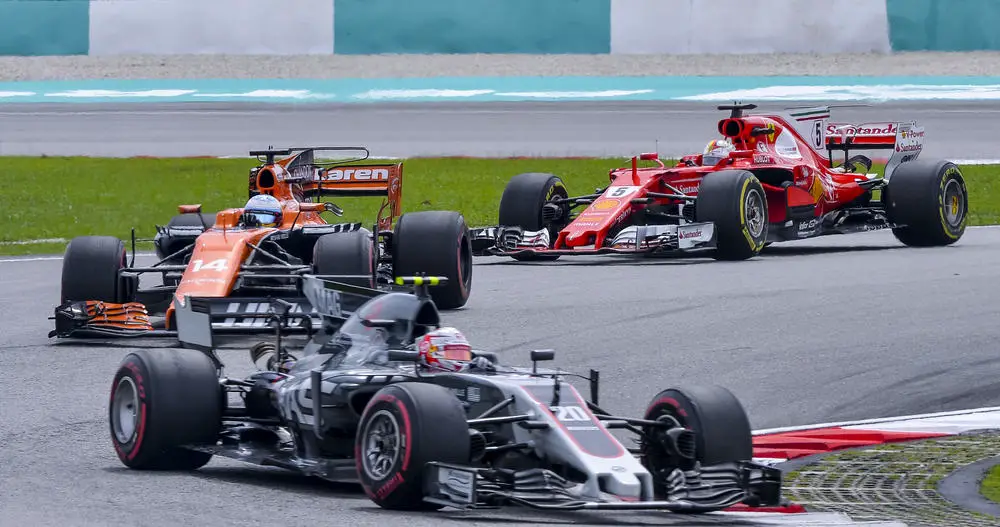
The Formula 1 steering wheel is the ultimate control panel for racecar drivers, and it plays a critical role in a driver’s success on the track. Every driver has their own unique setup and preferences when it comes to their steering wheel.
They have to be completely comfortable with it and have the ability to quickly and easily access their preferred settings can make all the difference in a race. During a race, drivers need to make split-second decisions that can have a significant impact on their performance.
For example, adjusting the fuel mixture can help a driver conserve fuel and stay out on the track longer, while changing the brake balance can improve cornering and reduce lap times. The ability to make these adjustments quickly and accurately is essential for success in F1 racing.
How Drivers Use The F1 Steering Wheel During a Race

F1 drivers use their steering wheels to control every aspect of their car’s performance, from changing gears to adjusting the fuel mixture. During a race, drivers need to be able to access their steering wheel controls quickly and easily, without taking their eyes off the road.
One of the most important functions of the steering wheel is the paddle shifters, which allow drivers to change gears without taking their hands off the wheel. This is critical in F1 racing, where split-second decisions can mean the difference between victory and defeat.
In a race like Melbourne in Australia, the driver will use the shift paddles around 50 times during each circuit. TheF1 steering wheel has 15 shift indicator LEDs located above the central display that help the driver to find the ideal shift point.
The system includes the clutch paddles, which are used for launching and pit stops, and the buttons and rotary dials used for adjusting various systems.
The Role of Technology in the Formula 1 Steering Wheel
The Formula 1 steering wheel is a highly sophisticated piece of technology that incorporates a range of sensors, displays, and controls that allow drivers to fine-tune their cars in real-time. The latest F1 steering wheels include an array of sensors that can detect everything.
These include
- The driver’s heart rate
- The driver’s breathing patterns.
- The current speed the car is maintaining.
- The lap time of the most recent lap.
- The lap time delta to a reference lap.
- The gear the car is in.
- The battery percentage for the hybrid system
- The tire temperature deltas
- The engine temperature
- The brake temperatures
The data collected by these sensors is then used to adjust various systems on the car, such as the fuel mixture, engine mapping, and brake balance.
This allows drivers to optimize their car’s performance based on real-time data, giving them a significant advantage over their competitors.
The Future of the Formula 1 Steering Wheel

The F1 steering wheel has come a long way over the years, and it is likely to continue evolving in the future. As technology advances, we can expect to see even more sophisticated F1 steering wheels that incorporate new sensors, displays, and controls.
One area where we may see significant advancements is in the use of augmented reality (AR) and virtual reality (VR) technologies. These technologies could be used to create virtual displays on the F1 steering wheel that provide drivers with even more information and control over their cars.
Behind the Scenes of Designing and Manufacturing the Steering Wheel
Designing and manufacturing an F1 steering wheel is a complex process that requires a team of highly skilled engineers and technicians. The process starts with the design of the steering wheel, which is typically done using computer-aided design (CAD) software.
Once the design is complete, the steering wheel is manufactured using a range of advanced materials and techniques, such as carbon fiber and 3D printing. The finished steering wheel is then rigorously tested to ensure that it meets the high standards required for use in F1 racing.
Famous F1 Steering Wheels and Their Unique Features

Over the years, there have been many famous F1 steering wheels, each with its own unique features and design. Some of the most famous F1 steering wheels include the Ferrari F2002 steering wheel, which featured a large display screen and a range of buttons and dials for adjusting various systems.
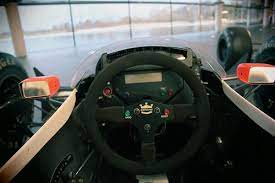
Another famous F1 steering wheel is the McLaren MP4/4 steering wheel, which was used by Ayrton Senna during his championship-winning season in 1988. The steering wheel featured a range of buttons and switches for adjusting various systems, as well as a digital display for showing lap times and other data.
Conclusion
The F1 steering wheel is the ultimate control panel for racecar drivers, and it plays a critical role in a driver’s success on the track. From changing gears to adjusting the fuel mixture, the F1 steering wheel allows drivers to fine-tune their cars in real-time and make split-second decisions that can mean the difference between victory and defeat.
As technology continues to advance, we can expect to see even more sophisticated F1 steering wheels that incorporate new sensors, displays, and controls. However, no matter how much technology is added, the F1 steering wheel will always remain a critical part of modern motorsport, and a symbol of the incredible skill and precision of the world’s best drivers.

